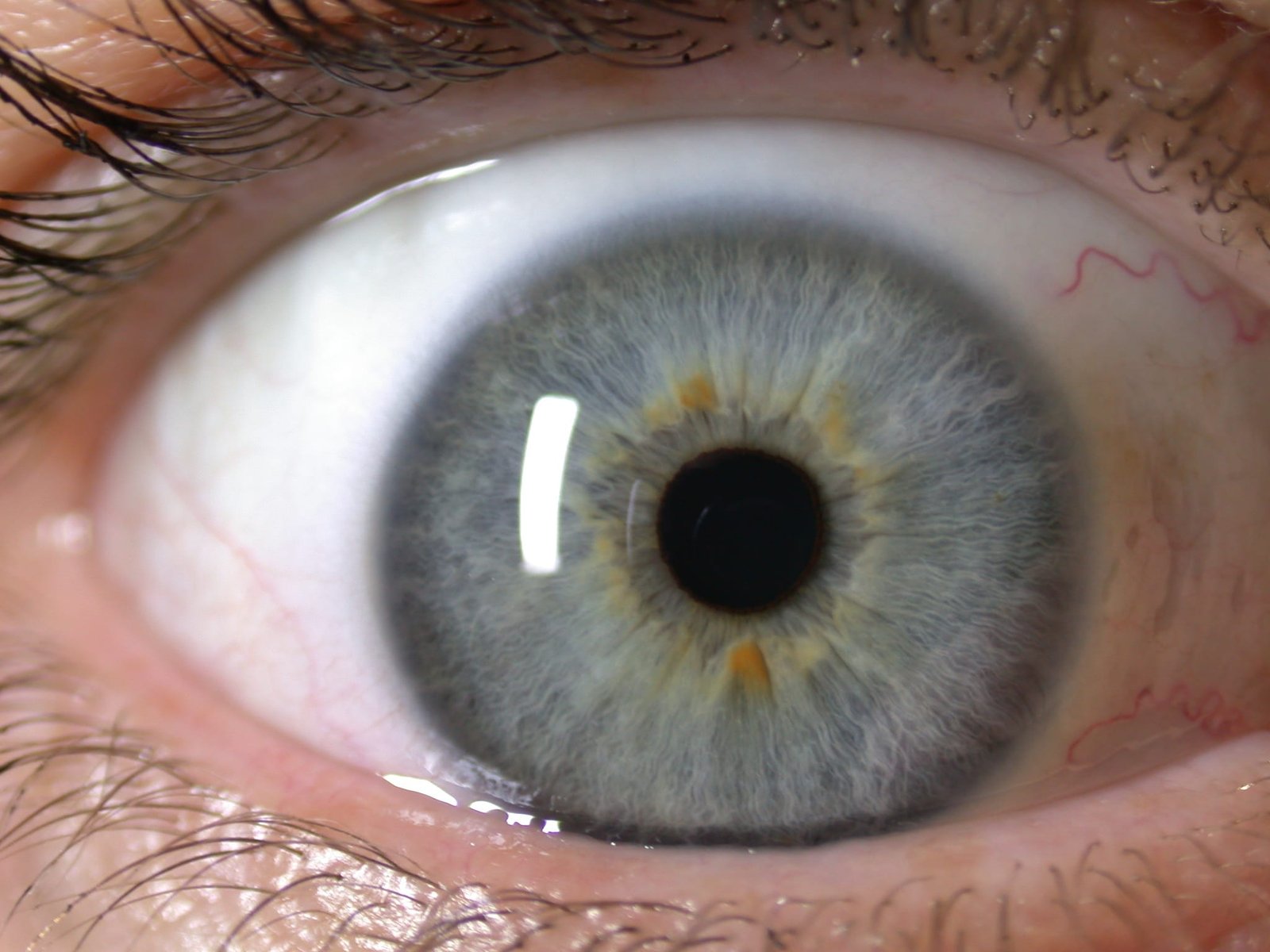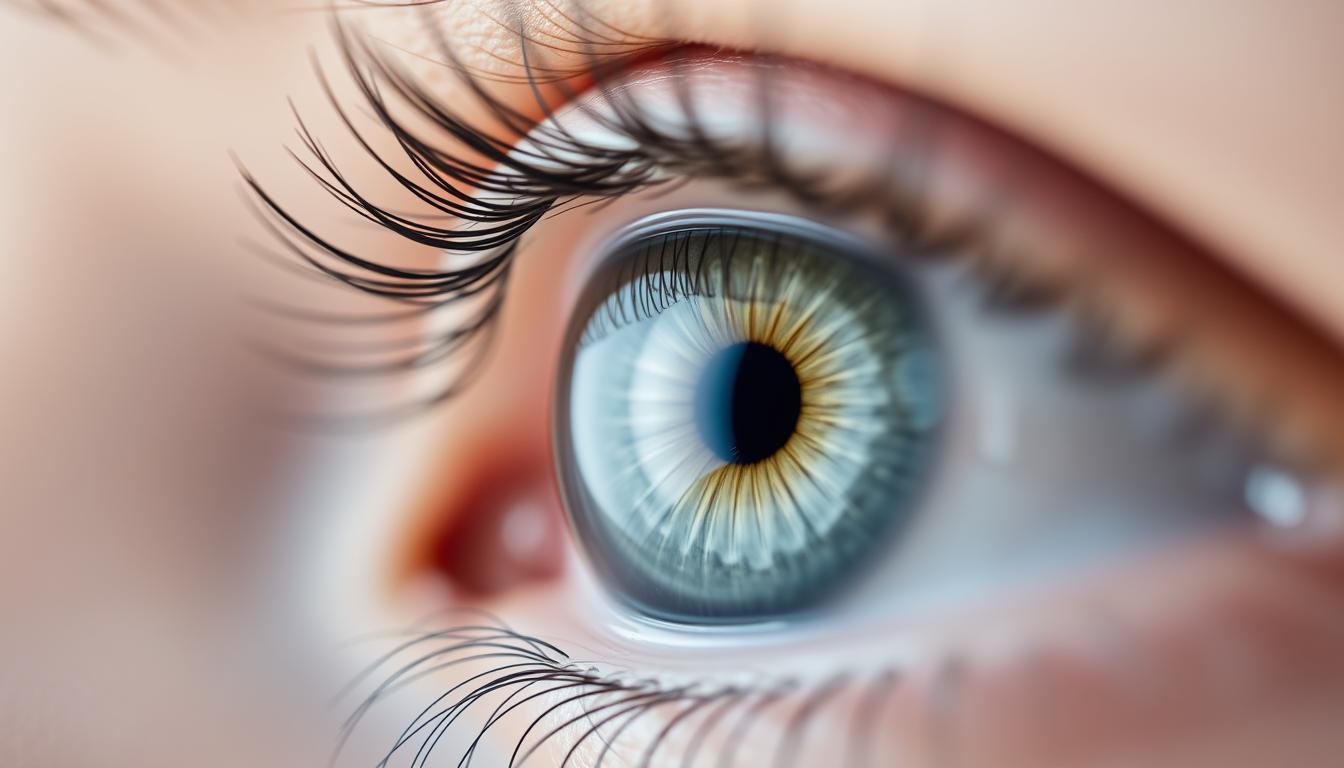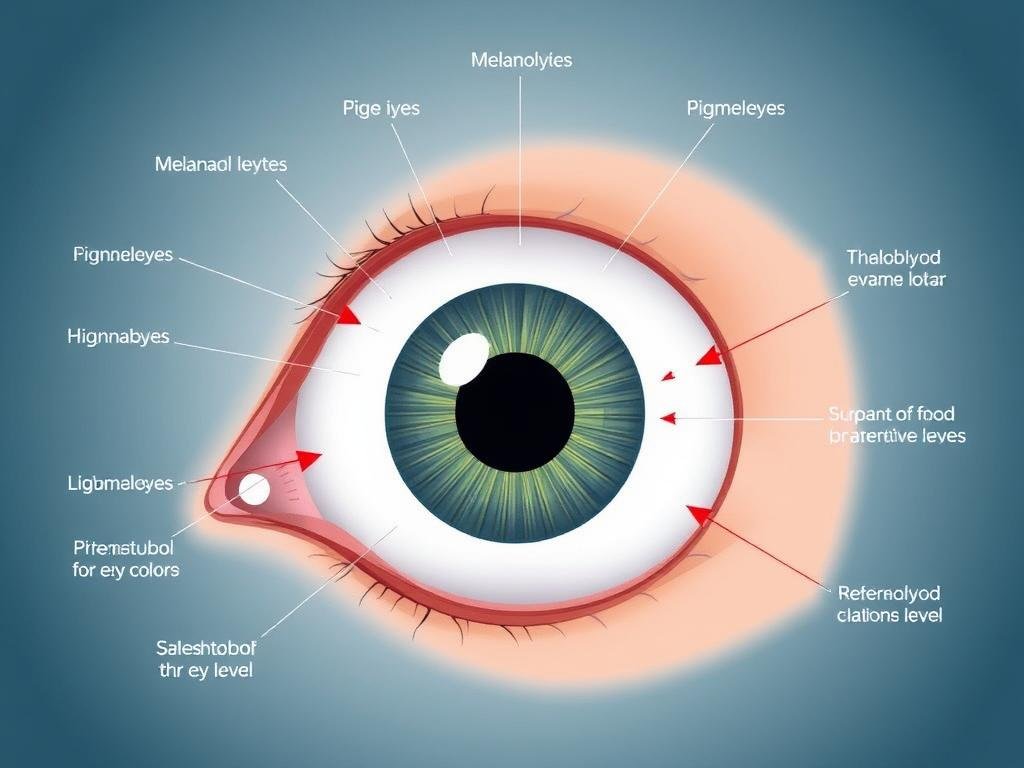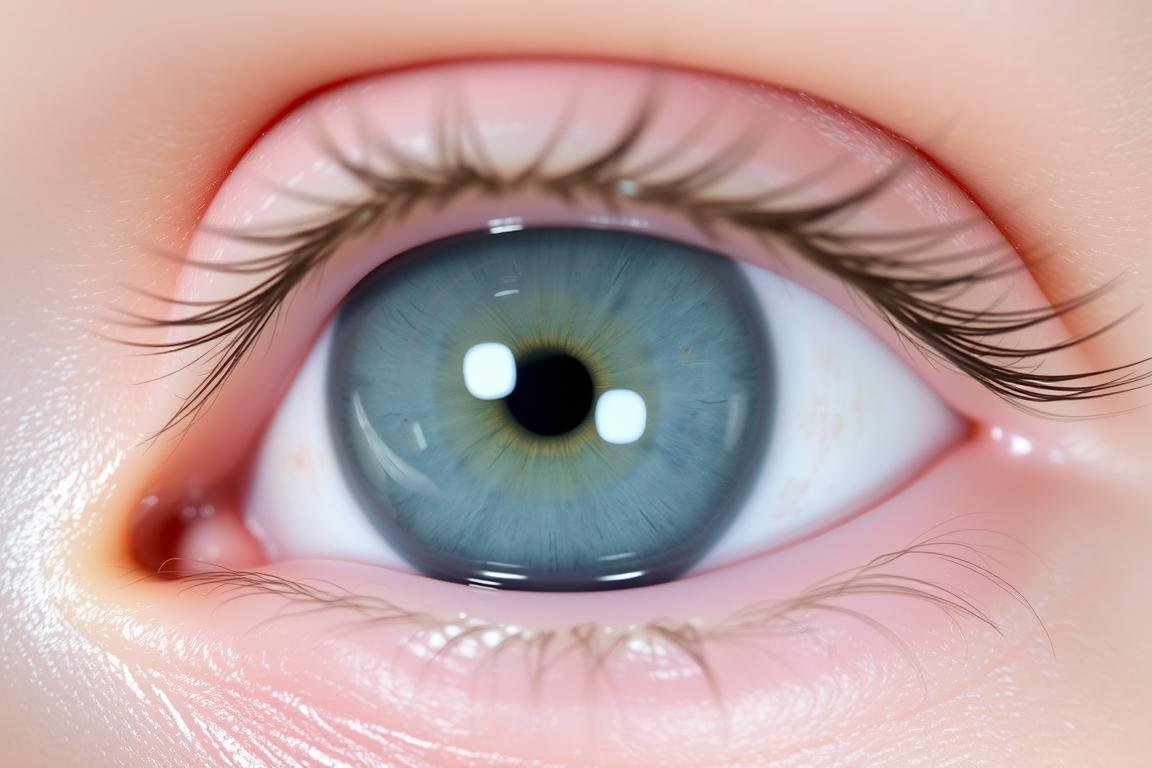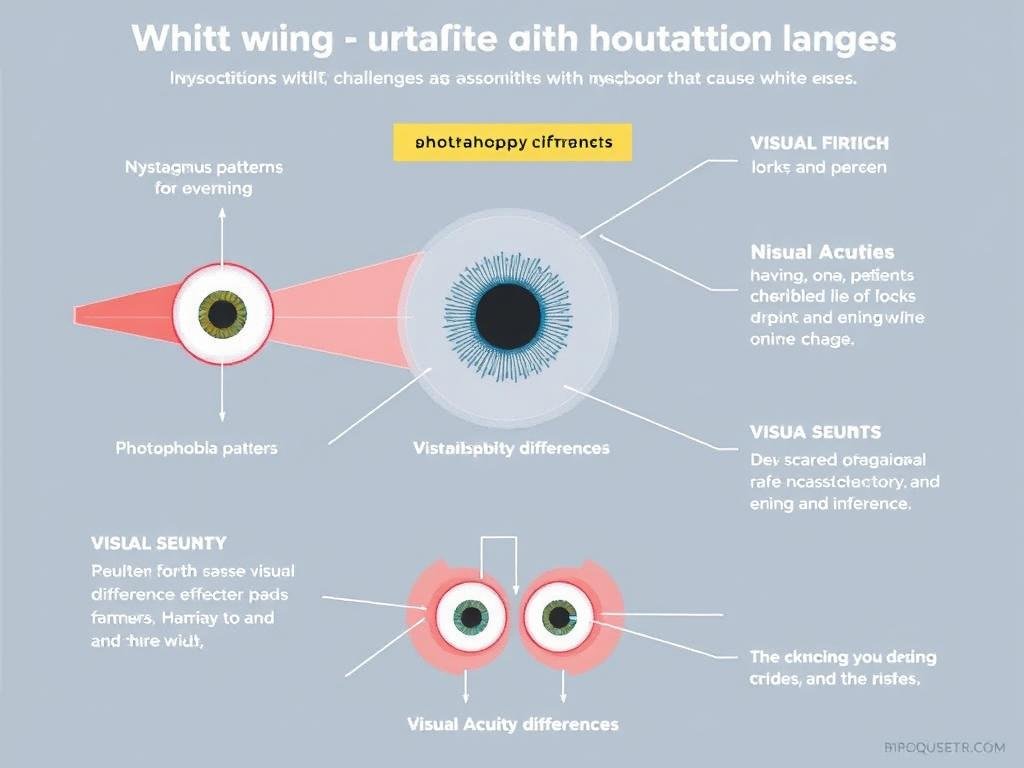Yeux d'iris blancs : L'œil humain, avec sa structure complexe et ses colorations diverses, fascine depuis longtemps les scientifiques et les artistes. Parmi les apparences oculaires les plus rares et les plus frappantes figurent les iris blancs. Cette coloration inhabituelle peut être à la fois une source d’émerveillement et d’inquiétude, suscitant des questions sur ses causes, ses implications sur la vision et sa signification culturelle. Dans ce guide complet, nous explorerons la science derrière les iris blancs, leur représentation dans la culture, et répondrons aux questions courantes sur ce trait oculaire distinctif.La science de la pigmentation de l'iris
Le iris est la partie colorée de l’œil qui entoure la pupille : l’ouverture circulaire noire au centre. Il contient des cellules spécialisées appelées mélanocytes qui produisent de la mélanine, le même pigment responsable de la couleur de la peau et des cheveux. La quantité et la distribution de mélanine déterminent la couleur des yeux, des concentrations plus élevées créant des yeux plus foncés et des quantités plus faibles donnant des couleurs plus claires.
La plupart des gens ont les yeux bruns, bleus, verts ou noisette. Les iris blancs sont extrêmement rares et résultent généralement d’une absence totale ou quasi-complète de mélanine dans le tissu de l’iris. Ce manque de pigmentation permet aux tissus fibreux et aux vaisseaux sanguins sous-jacents de devenir visibles, créant l’apparence d’un iris blanc ou bleu-blanc très pâle.

Quelles sont les causes des iris blancs ?
Les iris blancs ne sont généralement pas une maladie autonome, mais plutôt le symptôme de plusieurs maladies génétiques ou médicales sous-jacentes. Comprendre ces causes est essentiel pour un diagnostic et une prise en charge appropriés.
Albinisme oculaire
L'albinisme oculaire est une maladie génétique qui affecte la pigmentation des yeux sans nécessairement affecter la couleur de la peau et des cheveux. Les personnes atteintes d'albinisme oculaire ont souvent des iris de couleur très claire qui peuvent apparaître blancs, bleu pâle ou rosâtres en raison des vaisseaux sanguins qui traversent l'iris. Cette maladie est généralement liée à l’X, ce qui signifie qu’elle affecte principalement les hommes mais peut être véhiculée par les femmes.
Syndrome de Waardenburg
Yeux d'iris blancs : Le syndrome de Waardenburg est un groupe de maladies génétiques pouvant entraîner une perte auditive et des modifications de la pigmentation des cheveux, de la peau et des yeux. Une caractéristique distinctive de ce syndrome est l’hétérochromie (yeux de couleurs différentes) ou des yeux bleu très pâle pouvant paraître presque blancs. Les personnes atteintes du syndrome de Waardenburg peuvent avoir un toupet blanc (tache de cheveux blancs) et des traits du visage distinctifs.
Albinisme complet
Yeux d'iris blancs L'albinisme complet affecte la pigmentation de tout le corps, y compris les yeux, la peau et les cheveux. Les personnes atteintes d'albinisme complet ont généralement des iris de couleur très claire qui peuvent apparaître rougeâtres, roses ou bleu-blanc pâle en raison du manque de mélanine. Cette condition provoque également une photophobie (sensibilité à la lumière) et peut avoir un impact sur l'acuité visuelle.
Traumatisme ou maladie
Dans certains cas, un traumatisme ou une maladie peut provoquer une dépigmentation de l’iris, entraînant l’apparition de taches blanches ou d’un aspect blanchâtre. Des conditions telles que l'iritis (inflammation de l'iris), certains médicaments ou des blessures peuvent parfois affecter la coloration de l'iris. Contrairement aux causes génétiques, ces changements acquis peuvent affecter seulement un œil ou une partie de l’iris.
Préoccupé par les changements dans la couleur de vos yeux ?
Des changements soudains dans la couleur des yeux peuvent parfois indiquer des problèmes de santé sous-jacents. Si vous remarquez des changements dans la couleur de votre iris, il est recommandé de consulter un ophtalmologiste.
Trouvez un ophtalmologiste près de chez vous
Les yeux blancs dans la culture pop
Tout au long de l’histoire et dans diverses cultures, les yeux blancs ou très pâles ont eu un poids symbolique important, représentant souvent quelque chose d’un autre monde ou de surnaturel.
Mythologie et folklore
Dans de nombreuses mythologies, les êtres aux yeux blancs sont associés à une cécité qui confère paradoxalement une vision intérieure ou des capacités prophétiques. Les oracles de la Grèce antique étaient souvent représentés comme des aveugles aux yeux pâles, symbolisant leur lien avec la sagesse divine. Dans la mythologie nordique, Odin a sacrifié un œil pour acquérir la sagesse et est parfois représenté avec un œil pâle ou blanc représentant sa perspicacité surnaturelle.
Littérature et cinéma
Yeux d'iris blancs: Dans la littérature et le cinéma modernes, les personnages aux iris blancs représentent souvent le surnaturel, la cécité dotée de capacités spéciales ou des origines surnaturelles. Des voyants aveugles des romans fantastiques aux extraterrestres et êtres surnaturels de la science-fiction, les yeux blancs servent de raccourci visuel aux personnages qui perçoivent le monde différemment des humains ordinaires.
Les exemples populaires incluent des personnages comme Storm de X-Men (dont les yeux deviennent blancs lorsqu'ils utilisent ses pouvoirs), le prophète aveugle Tirésias dans diverses adaptations de la mythologie grecque et de nombreux personnages de genres animés et fantastiques qui manifestent des yeux blancs lors d'états de pouvoir ou de conscience accrus.
Symbolisme et signification
Les iris blancs dans les contextes culturels symbolisent souvent :
- Autre monde ou origine surnaturelle
- Perception accrue ou capacités spéciales
- Une sagesse qui transcende la vue ordinaire
- Pureté ou connexion divine
- Une cécité qui donne paradoxalement la perspicacité
Ce riche symbolisme a fait des yeux blancs un élément visuel puissant dans la narration sur divers médias, renforçant ainsi la fascination des humains pour les apparences inhabituelles des yeux.
Implications sur la santé des iris blancs
Bien que les iris blancs eux-mêmes ne soient pas nocifs en soi, les affections sous-jacentes qui les provoquent peuvent avoir diverses implications sur la santé, notamment sur la vision.
Défis visuels
Yeux d'iris blancs : De nombreuses conditions qui provoquent des iris blancs affectent également d'autres parties du système visuel. Les personnes atteintes d'albinisme oculaire ou d'albinisme complet souffrent souvent de :
- Acuité visuelle réduite (netteté)
- Nystagmus (mouvements oculaires involontaires)
- Strabisme (désalignement des yeux)
- Photophobie (sensibilité à la lumière)
- Difficulté avec la perception de la profondeur
Conditions de santé associées
Selon la cause sous-jacente, les iris blancs peuvent être associés à d’autres problèmes de santé :
- Perte auditive (fréquente dans le syndrome de Waardenburg)
- Risque accru de cancer de la peau (dans l'albinisme)
- Problèmes de développement des nerfs optiques et de la rétine
- Défis sociaux et psychologiques dus à une apparence distinctive
Un diagnostic précoce et une prise en charge appropriée de ces affections sont essentiels pour optimiser la qualité de vie et la fonction visuelle.
Diagnostic et prise en charge
Yeux à iris blancs : Si vous ou votre enfant avez des iris blancs, un examen complet de la vue par un ophtalmologiste est recommandé. Le diagnostic implique généralement :
- Histoire familiale détaillée
- Examen complet de la vue
- Test d'acuité visuelle
- Tests génétiques dans certains cas
- Évaluation d'autres symptômes potentiels
La gestion des conditions provoquant des iris blancs se concentre sur la résolution des problèmes de vision associés et peut inclure :
Aide visuelle
- Lunettes de vue ou lentilles de contact
- Aides à la basse vision pour les personnes ayant une déficience visuelle importante
- Verres teintés spéciaux pour lutter contre la photophobie
- Thérapie visuelle pour des problèmes comme le nystagmus
Adaptations du mode de vie
- Protection UV pour les yeux et la peau
- Modifications des environnements à la maison, à l’école ou au travail
- Groupes de soutien et ressources
- Surveillance régulière par des professionnels de la vue
FAQ sur les couleurs inhabituelles des yeux
Les iris peuvent-ils devenir blancs plus tard dans la vie ?
Bien que les iris ne deviennent généralement pas complètement blancs plus tard dans la vie, des changements de couleur peuvent survenir en raison de plusieurs facteurs :
- Certains médicaments (comme les analogues des prostaglandines utilisés pour le glaucome)
- Blessures ou traumatismes oculaires
- Conditions inflammatoires comme l'iritis ou l'uvéite
- Iridocyclite hétérochromique de Fuchs (un type d'inflammation oculaire)
- Syndrome de dispersion pigmentaire
Tout changement notable dans la couleur de l’iris doit être évalué par un professionnel de la vue, car il pourrait indiquer une affection sous-jacente nécessitant un traitement.
Les iris blancs sont-ils dangereux pour la vision ?
Iris blancs eux-mêmes ne sont pas intrinsèquement dangereux pour la vision. Cependant, les affections sous-jacentes à l'origine des iris blancs, telles que l'albinisme oculaire ou le syndrome de Waardenburg, affectent souvent d'autres parties du système visuel et peuvent avoir un impact sur la qualité de la vision.
Yeux à iris blancs : les personnes atteintes de ces affections peuvent présenter une acuité visuelle réduite, un nystagmus (mouvements oculaires involontaires), une photophobie (sensibilité à la lumière) et d'autres problèmes de vision. Avec un diagnostic, une prise en charge et un soutien visuel appropriés, de nombreuses personnes atteintes de ces pathologies peuvent conserver une bonne vision fonctionnelle tout au long de leur vie.
À quel point les iris naturellement blancs sont-ils rares ?
Yeux d'iris blancs : Les iris vraiment blancs sont extrêmement rares. L'albinisme oculaire complet touche environ 1 personne sur 20 000 dans le monde, avec divers degrés de dépigmentation de l'iris. Le syndrome de Waardenburg est encore plus rare, touchant environ 1 personne sur 40 000.
Il convient de noter que de nombreux yeux sont décrits comme “blanc” ont en fait des iris bleu très pâle avec une pigmentation minime. Les vrais iris blancs seraient totalement dépourvus de pigmentation, ce qui permettrait aux tissus fibreux et aux vaisseaux sanguins de l'iris de transparaître, créant souvent une apparence blanc bleuâtre pâle ou rosâtre selon les conditions d'éclairage.
Les lentilles de contact peuvent-elles changer la couleur des yeux en blanc en toute sécurité ?
Des lentilles de contact colorées, y compris celles qui créent un effet iris blanc, sont disponibles à des fins cosmétiques. Cependant, ceux-ci ne doivent être utilisés que si :
- Ils sont obtenus sur ordonnance valide d'un professionnel de la vue.
- Ils sont approuvés par la FDA et achetés auprès d'une source légitime
- Des protocoles d’hygiène et de soins appropriés sont suivis
Les lentilles de contact colorées en vente libre ou de mauvaise qualité peuvent provoquer de graves blessures aux yeux, des infections et même une perte de vision. Les lentilles sclérales blanches (qui couvrent toute la surface visible de l'œil) sont particulièrement risquées et ne doivent être utilisées que sous la surveillance d'un professionnel, par exemple pour des représentations théâtrales.
Comprendre et adopter la diversité oculaire
Les iris blancs ne représentent qu’un aspect fascinant de la diversité de l’œil humain. Qu’ils résultent de maladies génétiques comme l’albinisme oculaire ou le syndrome de Waardenburg, ces yeux distinctifs ont captivé l’imagination humaine à travers l’histoire et à travers les cultures.
Si vous ou quelqu'un que vous connaissez avez des iris blancs ou une apparence inhabituelle des yeux, consulter un ophtalmologiste peut fournir des informations précieuses sur les conditions sous-jacentes et les stratégies de gestion appropriées. Avec des soins et un soutien appropriés, les personnes présentant ces caractéristiques oculaires rares peuvent maintenir une bonne santé oculaire et adopter leur apparence unique.
Vous avez des questions sur votre santé oculaire ?
Des examens de la vue réguliers sont essentiels pour maintenir une bonne vision et détecter rapidement tout changement dans votre santé oculaire. Si vous avez des inquiétudes concernant la couleur de vos yeux ou tout changement de vision, planifiez une consultation avec un spécialiste des soins de la vue.
Planifiez un examen de la vue aujourd'hui

